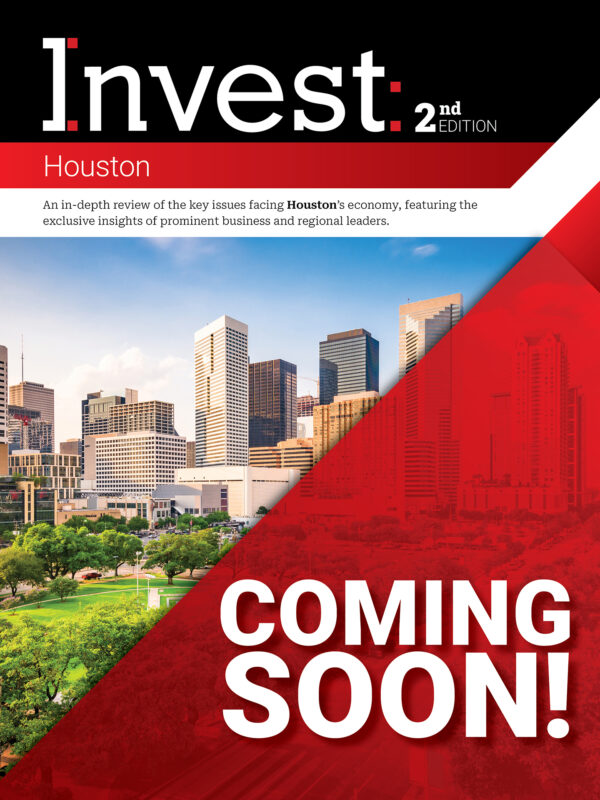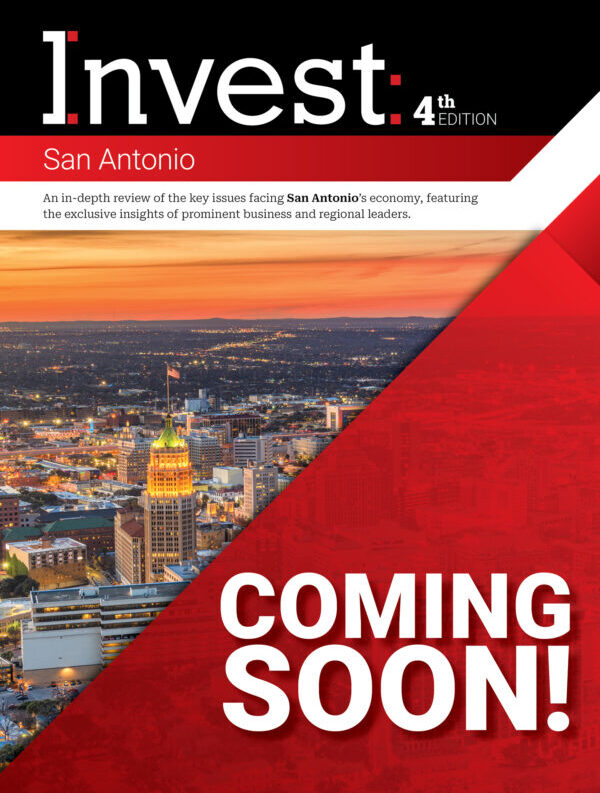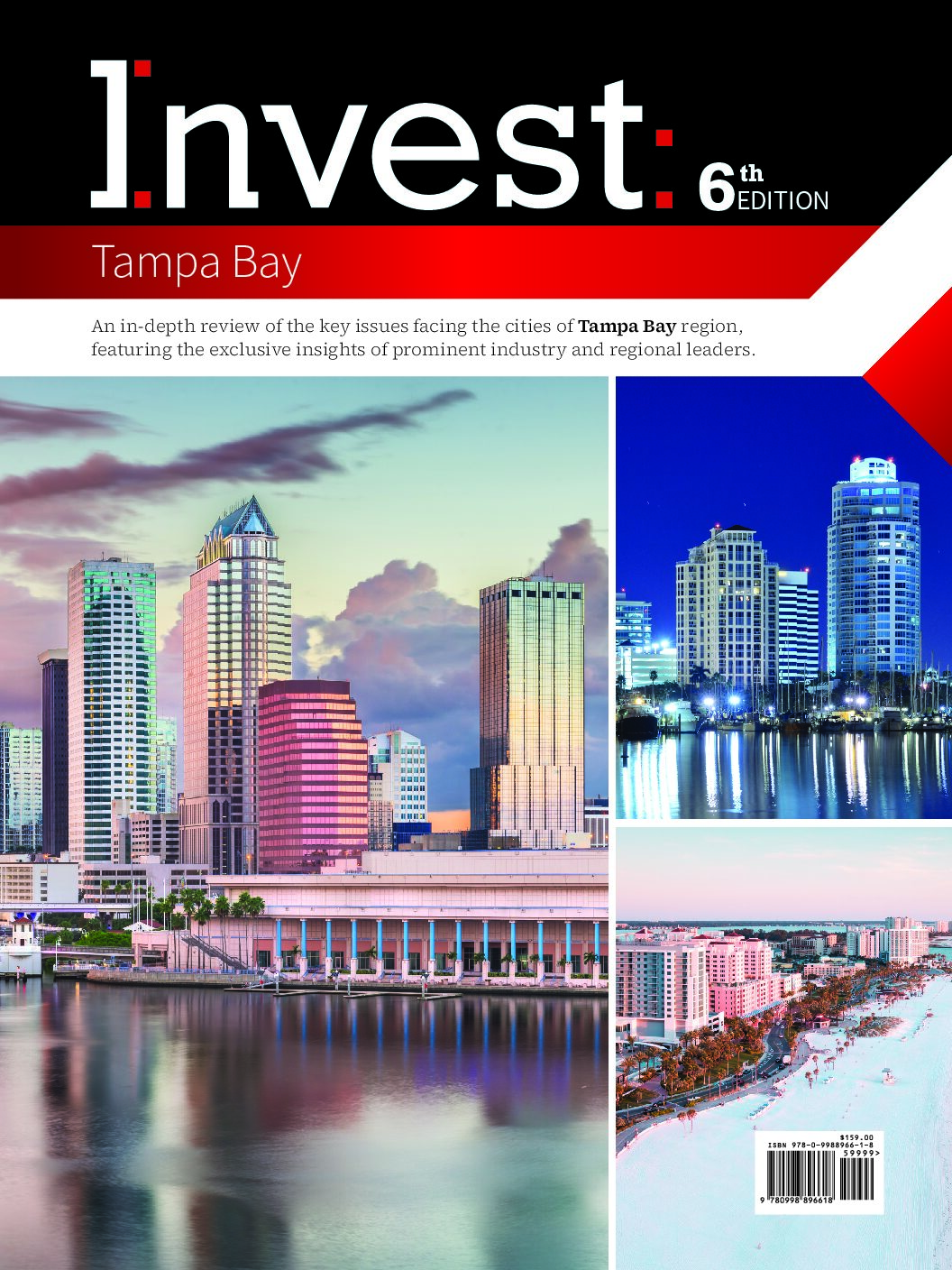TJ Gilmore, Mayor, City of Lewisville
Invest: was joined by TJ Gilmore, mayor for the City of Lewisville, and discussed what the city is doing to improve infrastructure and keep housing affordable, with the intention of continuing to grow the workforce and bring in business. “A municipality’s focus is on how we can make our businesses and residents successful. We make connections regionally, working with our state legislators while keeping an intense focus on our community,” he said.
What has gone into creating an efficient mass transit system in Lewisville?
In addition to being the mayor, I’m also the vice chair of the Denton County Transportation Authority (DCTA), one of three in the DFW region. DCTA is funded by three cities – Lewisville, Denton and Highland Village. Transit is critical to get our workforce where it needs to be. We have an extensive transit system that works well and there are opportunities the region is looking at to work with neighboring transit agencies. When it comes to innovation, DCTA is one of the few agencies that is exceeding pre-pandemic transit levels, meaning we’ve grown our ridership since then. We have a program called Go Zone, an on demand transit service which covers 100% of Lewisville, whereas our previous bus service only covered about 40%.
There has been a lot of anxiety about transit at the national level with more remote work and diverse workforces finding less use of it. The secret to DCTA’s success is that we’re extremely innovative, looking at how we’re built out and the tools available to improve services. At the end of the day, a successful transit system isn’t about buses, trains or on demand services, it’s about moving people.
What is your assessment of the workforce in the region?
We have the people here, as Denton County is considered one of the top ten growing counties in the United States over the past decade. We get 86 new residents moving to Denton County every day. The blend of business types has also created a workforce with a diversity of skill sets. We are seeing more wealth come into the region while construction and commercial development have exploded. People want to come here to work.
How is Lewisville creating more affordable housing options?
This past year, we redid our uniform development code (UDC), which is essentially how the city gets built. One thing we have been scrutinizing is parking and whether we need the level that has been built in North Texas. Most developers and planners are realizing people aren’t using cars as we did in the past, especially in commercial businesses, where more people than ever order online and don’t need to go out to shop.
We also look at infill density, while at the same time not rezoning our existing single family homes to create gentrification. It’s a real balancing act to bring in that density which can increase property values without pushing it out into the affordable neighborhoods we already have. Lewisville has also put into place the opportunity for residents to build accessory dwelling units, which are small efficiency apartments that can be added to a property and rented out. It’s a way for residents to mitigate some of the property value crunch by investing in their own property and creating rental income. Overall, it gives these single family properties more flexibility.
There is also more of a focus on the missing middle households like duplexes and triplexes. If there is a space for that type of building, we don’t zone against it because we want that mix of housing types and density. That goes back to transit and other municipal tools because the more density you have, the more efficient these tools can be. Ultimately, we don’t want to change what makes a neighborhood a neighborhood. Instead, we want to create flexibility for owners to stay in their home with an opportunity to provide additional income and, conversely, an affordable option for people looking for a place to live. We don’t want to displace people and take away the neighborhood they’ve invested in for generations.
How does Lewisville maintain a sense of its history while creating a trajectory for growth?
It’s difficult in North Texas because in the grand scheme, it is a relatively young region that doesn’t have the same kind of history you see on the east coast, for example. What makes history interesting is how it balances physical objects and nostalgia. We want to continue providing growth and opportunity while wrapping it around that history and nostalgia. We have an Old Town district with buildings from the 1880sm and we’ve developed a style that is visually consistent and a hub for great dining and shopping options that can create a unique experience. We have to build up these experiences where history exists while also helping support small businesses that create the vibrant fabric people are looking for.
What’s next for the City of Lewisville?
A municipality’s focus is on how we can make our businesses and residents successful. We make connections regionally, working with our state legislators while keeping an intense focus on our community of Lewisville. It’s about creating linkages and making sure the municipality has a seat at the table.
We want more efficiency with state and federal funding opportunities, and childcare is a big area in this regard. Over the next year, we’re working to make sure we have adequate child care resources, especially for pre-K. This is about creating opportunities for businesses and people to live and invest here, and childcare is a significant component in that. Working families need affordable childcare and it’s a real challenge for them to decide how they work full time and take care of their kids.
We’re a first ring suburb, so redevelopment is always present, especially with the opportunities for growth along our business Route 121 corridor. Our intention is to create a more livable, walkable and business-friendly environment along that corridor.













